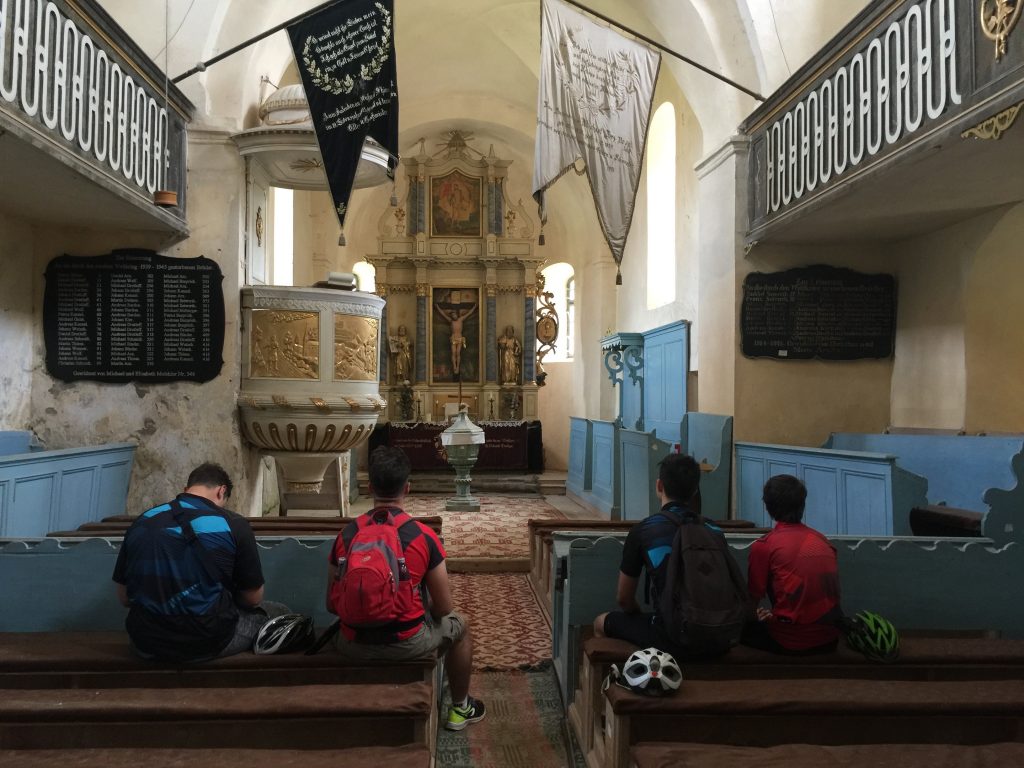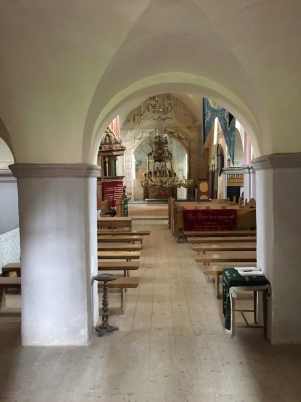02 Oct Exploring the Saxon churches by bicycle
The team of four students participating in the Silver Duke of Edinburgh Award had an amazing journey by bicycle – they rode 120 km and explored 8 fortified churches in Transylvania. They discovered themselves, learnt new things about their colleagues and enjoyed discovering pieces of history together.
Here is the story as seen through IOAN PRISTAVU, ALEX BOJAN, DANIEL BEGA and ALEX SERBAN’s eyes and lenses:
‘This silver test trip has been an eye-opening experience, and I speak for my teammates when I say that we were impressed and left speechless at the beauty and history of the churches that we visited. It is a shame that many were not repaired and brought to their full potential, proving how little is know about them. We would much like to help change that and bring tourism to the old Saxon villages. Our goal was clear: let’s document the Saxon churches of Transylvania by riding our bikes!
MARPOD

The fortified church of Marpod lies northeast of Sibiu – in the Harbach valley where it stands out cautiously and well hidden behind trees and scrub. The Romanesque basilica, of which only a few elements remain in the present building, which dates back to the 13th century. Around 1500 the fortified church was built. It was given its present appearance at the end of the 18th century.
Chirpar


The village church was erected by the local Transylvanian Saxon community in the 12th century. It was initially built as a Romanesque basilica, made of stone. Sadly, not much information is known about the origins of the church.
NOCRICH


Nocrich Fortified Church is situated in the central square of Nocrich village. The village still keeps today the architectural style of the 18 – 19th centuries with ample constructions of bricks, rock and bricks and baroque style roofs. The first church was a Roman basilica built in the 13th century. The basilica was demolished in the beginning of the 19th century when a new church was erected. It is very possible that the two churches coexisted at the time. Along with the new church, the pentagonal wall from the 15th century was strengthened with 5 towers, one for each corner.
HOSMAN


In the early 16th century, the double precinct encircled a Romanesque basilica whose very eloquent stylistic elements place the monument in the eighth decade of the 13th century. The scenes painted inside the church invited us to a genuine journey to the world of phantasy while also giving us a life lesson: animal-like characters, biblical or fantastic characters, supernatural beings and dramatic scenes draw our attention to the eternal fight between good and evil, matter and spirit, divine and diabolic.
DAIA


The completion of the first hall church in Daia occurred in 1447 according to its mentioning on the keystone in the chancel.In the 19th Century the defensive systems of the ensemble were dismantled step by step, but outside the fortification, an impressive freestanding neo-classical bell tower, considered to be one of the highest in the country was built between 1829 and 1834. The hall of the church was covered with a flat ceiling in 1884, but the chancel still preserves its late Gothic vault.
ROSIA


A Romanesque basilica dates to the 13th century with Fortification work took place in the 16th century, with most of the windows and the entrance room in the western part dating to the 18th. The church resisted numerous armed attacks, including in 1600, when the army of Michael the Brave burned the village to the ground. However, the fortifications now lie in ruins.
ALTANA

In certain periods of the Middle Ages, Alţâna used to be one of the Saxon Seats. In the territory called “Fundus Regius”. Alţâna was a free community. The fact that it was a part of the Nocrich Seat is proven by the participation in 1349 of the Graf Syffridus of Alzen to the Assembly of the Seven Seats from the Province of Sibiu.
MAP OF SAXON CHURCHES








No Comments